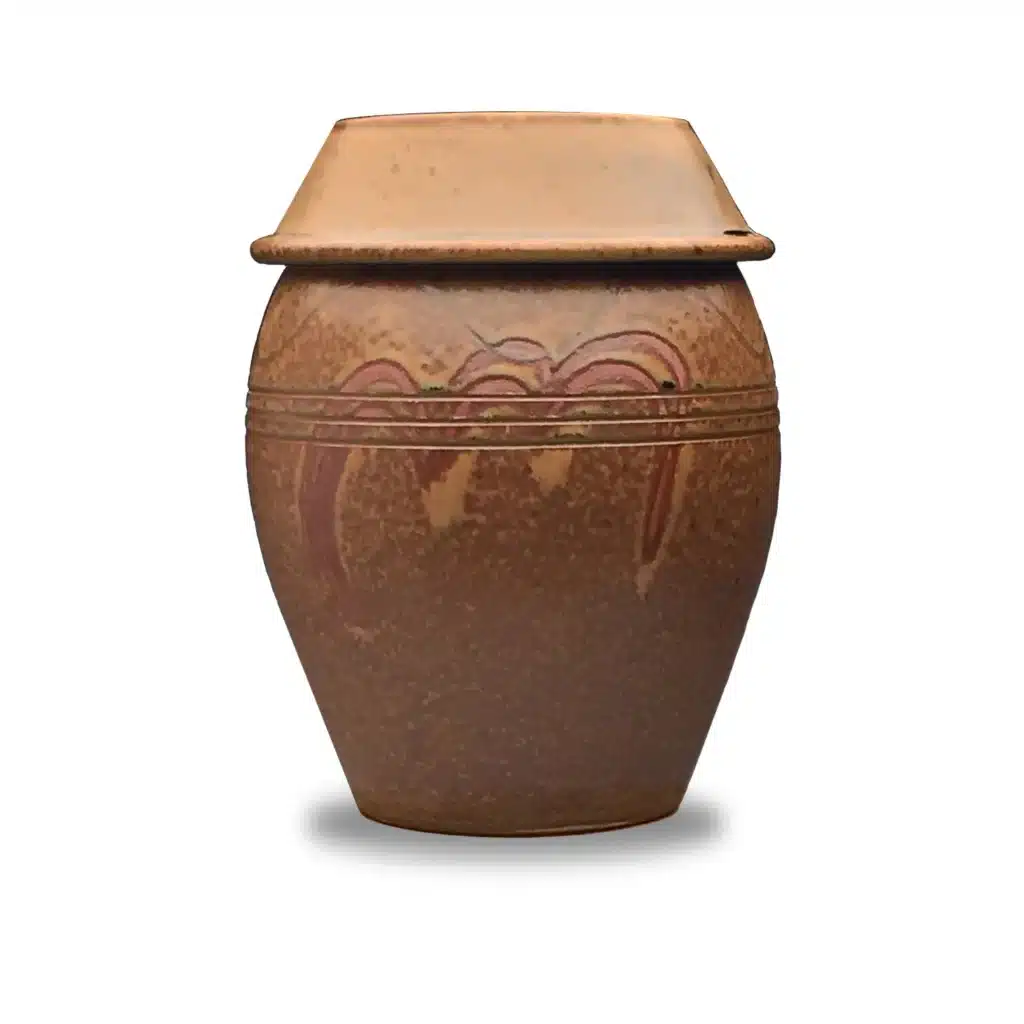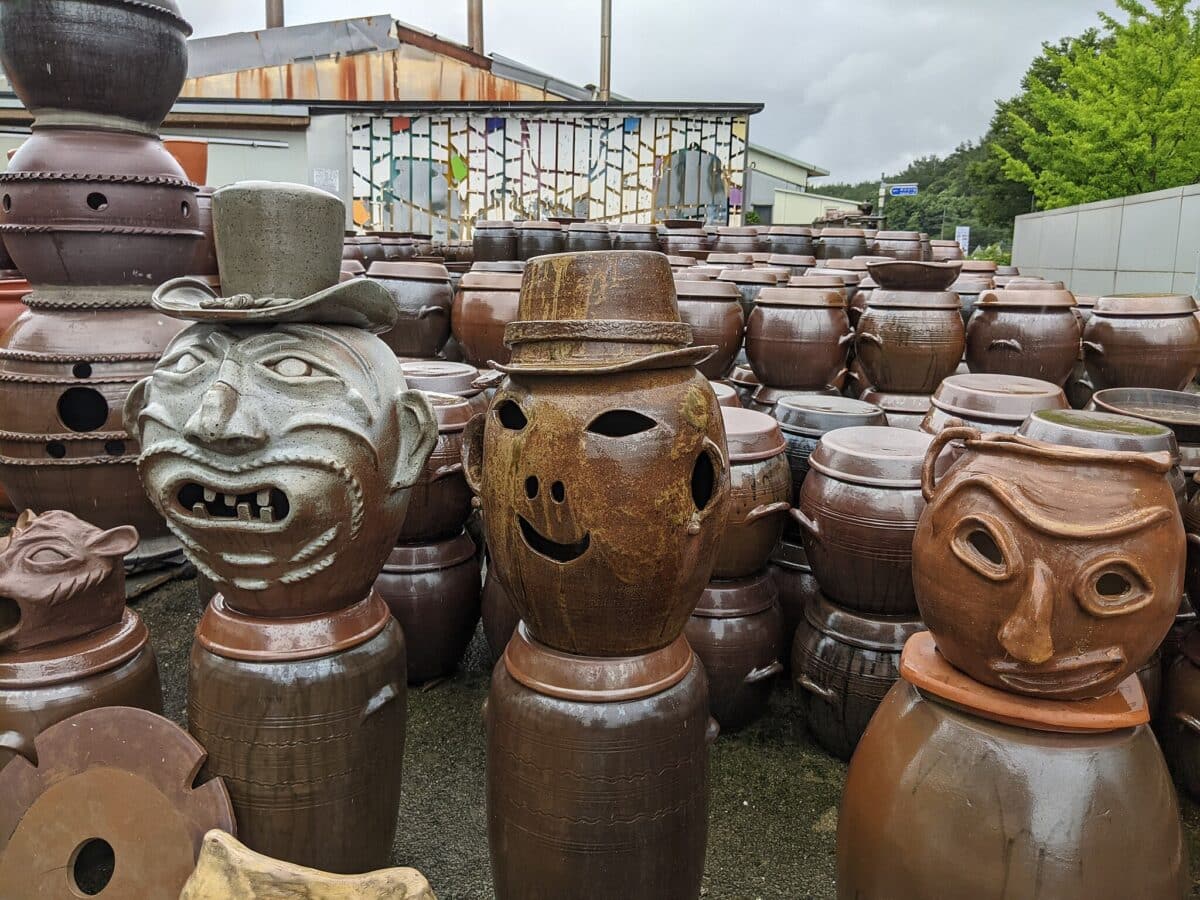Kimchi and the ceramic vessels used in its fermentation embody a significant aspect of Korean culinary tradition.
Kimchi, a staple in Korean cuisine, has roots that extend back to ancient times, serving as a method to preserve vegetables during harsh winters. The transformation of kimchi over the centuries from a simple preserved vegetable to a complex and varied dish highlights the evolution of culinary practices in Korea. This history is closely tied to the use of handmade ceramic vessels, known as “onggi,” which are crucial for the fermentation process that kimchi undergoes.
Initially, kimchi was a way to keep vegetables edible out of season.
Kimchi was originally made by fermenting vegetables in brine. With the introduction of chili peppers to Korea in the 17th century, the red kimchi familiar today began to take shape. Over time, regional variations emerged, leading to over 200 recognized types of kimchi, including the widely known napa cabbage kimchi, radish kimchi (kkakdugi), and cucumber kimchi (oisobagi). The process of making kimchi involves salting the vegetables and then mixing them with a paste made of chili powder, garlic, ginger, and other ingredients. Fish sauce or fermented shrimp is also added to enhance the umami flavor. This mixture is then placed in onggi to ferment. The fermentation can last from a few days to several months, during which the mixture develops into the tangy, spicy dish known as kimchi.
Kimchi is noted for its health benefits, including its probiotic content that supports gut health. The fermentation process not only enhances the flavors but also makes the nutrients in the vegetables more available, providing a source of vitamins A and C, as well as essential amino acids and minerals.
Unknown content block type: FlexiblePageTemplateFlexibleContentPhotoFullWidthLayout
{
"__typename": "FlexiblePageTemplateFlexibleContentPhotoFullWidthLayout"
}The onggi play a vital role in this process.
These ceramic vessels are made from a special clay fired at high temperatures, creating a porous surface that allows air to circulate while keeping contaminants out. This environment is key to successful fermentation, allowing the growth of beneficial bacteria while preventing the buildup of harmful gases.
The craftsmanship involved in making onggi is a traditional skill, passed down through generations. Each vessel is unique, shaped and glazed by hand, and fired in a kiln. Despite the availability of modern alternatives, there is a growing preference for using traditional onggi for fermenting kimchi, attributed to the quality of fermentation they support.
For those looking to add kimchi to their diet, it is available in Korean markets and increasingly in other grocery stores worldwide. While it is possible to use modern containers for fermenting kimchi at home, traditional onggi can offer a distinct advantage, potentially improving the fermentation process and the flavor of the final product.
Kimchi and the ceramic vessels used in its fermentation embody a significant aspect of Korean culinary tradition. The onggi, with their unique properties and the skill required to make them, are essential for creating kimchi that is both tasty and nutritious. As the interest in fermented foods continues to grow, the importance of these traditional practices and the artisans who maintain them remains significant.
Unknown content block type: FlexiblePageTemplateFlexibleContentPhotoFullWidthLayout
{
"__typename": "FlexiblePageTemplateFlexibleContentPhotoFullWidthLayout"
}Artisans making onggi today can be found in Korea and internationally, each adding a personal touch to their work. While some stick closely to traditional methods, others innovate with different shapes and finishes to meet new demands without compromising the vessels’ functional purpose.
Sustainability is an important consideration for these artisans, who often choose local clays to minimize their environmental impact. The handmade nature of onggi means that each piece is unique, reflecting the techniques and materials used by the artisan.
Despite the availability of modern alternatives like plastic or glass containers, many people prefer traditional onggi for the quality of fermentation they enable and the flavor they add to kimchi. This preference has led to a renewed interest in learning how to make onggi, with classes and workshops becoming more popular.
Artisans today balance keeping their work true to its traditional roots while making it relevant for current users. Some incorporate modern designs into their onggi, finding ways to keep the vessels functional for fermentation while also appealing to contemporary aesthetic preferences.

Some notable artisans include:
Adam Field, an American ceramic artist, who has deeply engaged with onggi pottery’s traditional methods after spending time in Korea. He makes these vessels and also teaches others about their importance in fermentation, bridging cultural gaps with his work.
In South Korea, Yoon Kwang-cho stands out as a master of onggi. He is known for his skill in traditional Korean ceramics, creating vessels that are both functional and beautiful, helping to keep the tradition alive.
Lee Kang-hyo is another respected name in Korean ceramics, famous for his onggi and expertise in Buncheong, a traditional stoneware technique. His work is recognized both in Korea and internationally.
Kim Il-Maan has dedicated his life to making onggi pottery. Known for the functionality and beauty of his work, Kim is committed to the preservation of Korean cultural heritage through his ceramics.
![]()
Today's artisans who make onggi, keep a traditional craft alive while adapting it to fit modern needs. These vessels vary in size, ranging from small ones suitable for home use to larger ones for commercial purposes.
